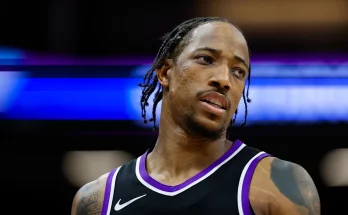The Boston Celtics’ frontcourt has undergone a dramatic transformation this offseason, signaling a clear shift in strategy and outlook as they prepare for the upcoming NBA campaign. What started as a plan to bring back familiar faces quickly changed as Luke Kornet moved on to San Antonio and Al Horford is poised to join the Golden State Warriors. While these departures mark the end of an era for some of Boston’s veteran frontcourt contributors, the Celtics have acted decisively to fill the gaps and maintain their competitive edge. The acquisition of Chris Boucher from the Toronto Raptors serves as a vivid statement that the Celtics are not entering a rebuilding phase or accepting a “gap year.” Instead, they are retooling on the fly with an eye firmly fixed on a deep playoff run.
This shift in personnel, and more importantly philosophy, offers a fascinating look into how the Celtics intend to navigate the complex balance between experience, youth, and tactical fit as they chase championship aspirations. Al Horford’s role in Boston has been emblematic of veteran leadership and defensive prowess, while Luke Kornet contributed as a reliable role player off the bench, offering shooting and rim protection. Their exits represent a significant change, but Boston’s front office and coaching staff have not been caught off guard. Instead, the team has responded aggressively, pivoting to new talent that aligns with their current needs and long-term vision.
Chris Boucher’s arrival brings several intriguing elements to the Celtics’ rotation. Though he may not possess the same defensive reputation or veteran status as Horford did in his prime, Boucher offers a blend of rebounding, floor spacing, and high-energy play that fits well with Boston’s fast-paced, versatile system. His ability to stretch the floor with shooting and his quickness around the rim make him a dynamic piece who can complement Boston’s core stars while injecting new life off the bench. The immediate playing time he is expected to receive underscores the Celtics’ trust in his potential to contribute meaningfully from day one.
The departure of Al Horford is especially noteworthy given his storied history with Boston. A multiple-time All-Star and a key piece in previous Celtics playoff runs, Horford’s presence in the locker room and on the court has been invaluable. However, the realities of aging and roster construction have necessitated change. The team’s willingness to let go of such a respected veteran highlights their commitment to adapting and evolving rather than clinging to the past. It also reflects a recognition that while leadership and experience are crucial, the Celtics need to optimize for speed, athleticism, and modern positional versatility.
Luke Kornet’s move to San Antonio is another piece of the puzzle that signals a recalibration of the Celtics’ frontcourt depth chart. Kornet, known for his shooting touch and rim protection, was a solid role player, but Boston’s decision not to re-sign him indicates confidence in the players stepping up behind the starters. The Celtics seem intent on entrusting more responsibility to younger players and those with more upside in their current system, rather than maintaining depth at all costs with veterans whose ceiling might be limited.
The narrative around the Celtics this offseason is particularly compelling because of the widespread speculation about a potential “gap year.” This term, often used in sports to describe a team’s intentional step back to develop young talent before pushing again, does not seem to apply here. Despite losing key veterans, Boston is signaling that their window for contention remains open and active. Rather than tanking or rebuilding from scratch, the team is tweaking its roster to be more adaptable and dynamic, ready to compete in a league that values speed, shooting, and defensive versatility.
Brad Stevens, Boston’s head coach, has been a consistent voice in emphasizing competitiveness and resilience. His track record of maximizing player potential and adjusting tactics on the fly will be crucial this season as the Celtics integrate new pieces like Boucher. The coaching staff’s ability to develop chemistry quickly and deploy players in roles that accentuate their strengths will determine how successfully Boston navigates the transition from Horford and Kornet to a new frontcourt identity.
From a strategic standpoint, the Celtics’ roster moves are a reflection of larger trends in the NBA. The league has shifted toward small-ball lineups, with an emphasis on spacing, pace, and multi-positional defenders who can switch seamlessly. In this context, Al Horford’s traditional five-man center role, while still valuable in certain matchups, is less central to Boston’s immediate plans. Chris Boucher’s skill set aligns with this evolution, offering shooting and agility that can help the Celtics keep up with faster, more versatile opponents.
Another important factor to consider is the impact of these changes on Boston’s locker room culture. Horford’s leadership has been a stabilizing force, so his departure leaves a void that the Celtics must fill through emerging leaders and a strong team ethos. Chris Boucher’s energy and work ethic could help invigorate the team, but the onus will also be on established stars and veterans to maintain cohesion and focus.
Financially, Boston’s moves also make sense. By moving on from veterans with sizable contracts, the Celtics gain more salary flexibility. This could be vital for making additional moves before the trade deadline or next offseason, enabling Boston to pursue upgrades or deepen their roster in ways that align with their playoff ambitions.
The Celtics’ frontcourt transition is emblematic of a broader commitment to adaptability. While Horford and Kornet were reliable, the team recognizes that success in today’s NBA demands continual evolution. By bringing in players like Chris Boucher, Boston is betting on a new combination of youth, versatility, and energy to keep them competitive at the highest level.
As the regular season approaches, all eyes will be on how well the Celtics integrate their new pieces and whether the gamble on retooling rather than rebuilding pays off. The narrative is clear: Boston is not content to pause and regroup but instead is determined to push forward aggressively. This attitude could serve them well in a highly competitive Eastern Conference, where every edge counts.
Ultimately, the Celtics’ frontcourt shakeup signals a pivotal moment. It marks the end of one chapter with the departure of seasoned veterans and the beginning of another defined by strategic recalibration and renewed ambition. Chris Boucher’s addition is a harbinger of this new phase—bringing fresh energy and a skill set tailored to the modern game. Boston’s refusal to buy into a “gap year” narrative shows their hunger to remain contenders and the belief that this roster can still achieve great things.
In a league where timing and adaptability often determine championship success, Boston’s frontcourt overhaul might just be the catalyst that sparks their next run. With Brad Stevens at the helm, a reinvigorated bench, and a core focused on growth and execution, the Celtics look poised to navigate this transition with resilience and purpose. The season ahead will reveal whether this bold move to move on from Horford and Kornet and embrace new talent like Boucher will pay off, but one thing is certain: Boston is swinging hard and ready to compete for glory.



